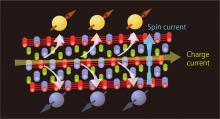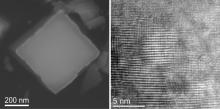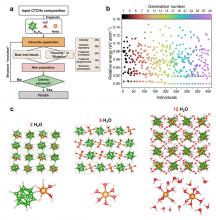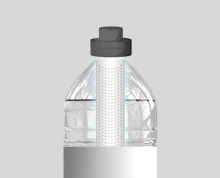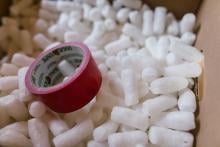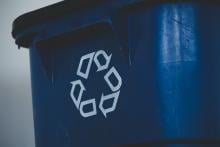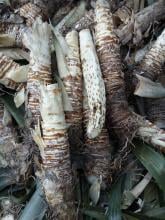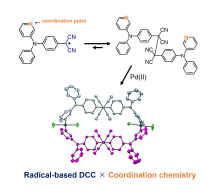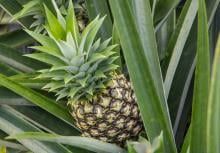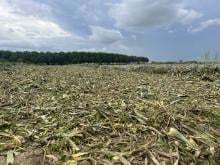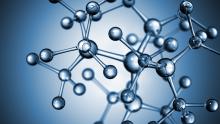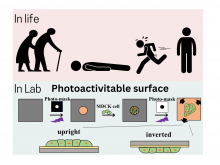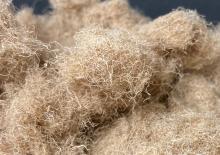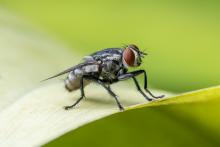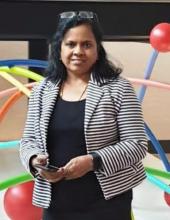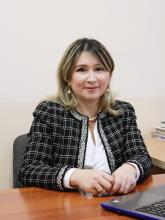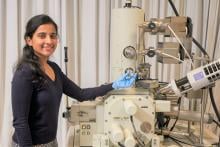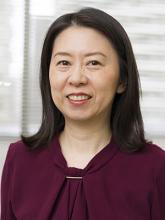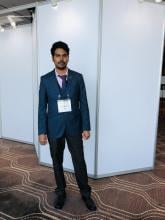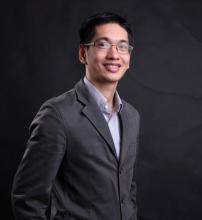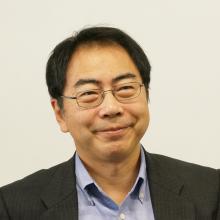Engineering & Technology Materials Science and Engineering
News
21 Sep 2023
A recent discovery in spintronics could potentially transform future electronics. A group of researchers have revealed the key role of cobalt-tin-sulfur in reducing energy consumption, unlocking new possibilities for high-speed, low-power spintronic devices.
13 Sep 2023
Systematic copper doping boosts all-solar utilization in tungstic acid nanocrystals.
10 Sep 2023
In this collaborative project between Newcastle University and Universiti Malaysia Perlis (UniMAP), the team aimed to create a sustainable, cost-effective lower limb prosthetic socket (LLPS) using natural fiber-reinforced composites. The objectives included designing a green LLPS, assessing its environmental impact, and engaging stakeholders. Pineapple Leaf Fiber (PALF) was chosen for sustainability. The project has also inspired worldwide interest in sustainable LLPS development through a press release, receiving inquiries from students at Nanyang Technological University in Singapore and a group of 7th graders in the USA.
28 Aug 2023
Solid-state batteries are a safer option that can hold even more energy than current go-to lithium-ion versions, but effectively harnessing their structure-performance relationship has remained a complex barrier to better batteries. Now, however, researchers at Tohoku University’s Advanced Institute for Materials Research in Japan have developed a framework to predict how the structure of solid-state electrolytes can affect the performance of a battery.
23 Aug 2023
SLINTEC, Monash University Malaysia, and Newcastle University UK and Singapore teamed up for Poseidon: a patented portable water filtration device attachable to a bottle, offering clean drinking water for those lacking access.
23 Aug 2023
The search for innovative materials will be greatly assisted by software that can suggest new experimental possibilities and also control the robotic systems that check them out.
23 Aug 2023
Associate Professor Taweechai Amornsakchai and his team of international researchers have developed novel bio-degradable rigid foams derived from pineapple waste, showcasing impressive properties. Starch and cellulosic materials are key components of the foams, which are processed via microwave gel formation and filler blending. The foams feature high strength, and rapid biodegradation, with potential for practical use from packaging, to construction, automotive, and aerospace.
21 Aug 2023
Deepak Verma from Chulalongkorn University and his international team of researchers are exploring ways to enhance chitosan using techniques like adding photosensitizers, dendrimers, and chemical modifications. They also surveyed the use of chitosan nanoparticles for medical purposes, notably wound dressings.
11 Aug 2023
A team of scientists from Thailand and Malaysia, led by principal investigator, Associate Professor Taweechai Amornsakchai from Mahidol University, has successfully developed a low-cost and green method to make films prepared from pineapple stem starch for food packaging, such as fruits and vegetable.
06 Aug 2023
A team of researchers from Singapore and the UK, led by Dr Wei Liang Lai, with supervisor, Associate Professor Kheng Lim Goh, has developed a portable device for repairing hard-to-see damage in carbon fiber materials. The device has great potential for the aerospace industry, such as to repair the fuselage of commercial aircraft.
22 Jun 2023
An international team of researchers from India and Singapore, led by Associate Professor Kheng Lim Goh from Newcastle University in Singpaore, has examined the impact of plastic waste management on creating a new type of clean-energy device, Tribo-electric nanogenerator. It compares recycling practices in Singapore and India, highlighting the importance of waste policies and infrastructure for successful recycling of plastics for making the clean-energy device. Challenges include contamination and decreased material quality with recycling.
18 Jun 2023
A team of researchers from universities in Thailand and Malaysia have collaborated to develop a unique kind of bioplastic sheet that is good for the environment and can decompose naturally. They made this bioplastic sheet using a byproduct of the bromelain industry which used the leftover pineapple stems from agricultural waste. This new type of bioplastic sheet has the potential to be used as single-use packaging material, as an alternative to the use of harmful plastic sheet, contributing to a more sustainable way of doing business and promoting a circular economy.
12 Jun 2023
Osaka Metropolitan University scientists synthesized a novel molecule by combining dynamic covalent reactions based on organic radicals and coordination reactions. They found that the two types of reactions do not inhibit each other. Their results suggest the possibility of synthesizing materials by combining different types of reactions, which is expected to lead to the construction of structures that have never existed before.
08 Jun 2023
Researchers at Kanazawa University report in ACS Nano how ultrathin layers of tin disulfide can be used to accelerate the chemical reduction of carbon dioxide — a finding that is highly relevant for our quest towards a carbon-neutral society.
07 Jun 2023
Scientists from Thailand, France and Singapore have conducted groundbreaking research using both tiny cellulose nanofibers (CNF) and long pineapple leaf fibers (PALF) to create stronger materials. They added varying amounts of CNF to epoxy and found that 1% CNF greatly increased impact strength. PALF-epoxy composites showed significant flexibility and strength improvements. Combining CNF and PALF resulted in a remarkable increase in impact strength. The findings could revolutionize stronger material development.
25 May 2023
A group of researchers from universities in Thailand and Malaysia have collaborated to develop a unique kind of film that is good for the environment and can decompose naturally. They made this film using leftover pineapple stems, which helps reduce the use of harmful plastic films. This new film has the potential to be used as packaging material, contributing to a more sustainable way of doing business and promoting a circular economy.
23 May 2023
Two key challenges in chemistry innovation are solved simultaneously by exploring chemical opportunities with artificial intelligence.
12 May 2023
Specially coated surfaces help scientists investigate what happens when cell clusters are turned upside down.
13 Apr 2023
A research group at Osaka Metropolitan University has succeeded in selectively recovering trace rare earth elements in synthetic seawater and environmental water, such as hot spring water, using baker’s yeast with a phosphate group added. The phosphorylated yeast is expected to be utilized as a material for recovering useful metals and removing toxic metals, thereby contributing to the realization of a metal resource-circulating society.
10 Apr 2023
AI finds the first stars ✨were not alone, Auto-switch for large electronic devices, A metabolite against autoimmune diseases, & Converting fruit waste 🍊🍉into solar stills. Plus in our blog: A career worth doing, a life worth living. Read all in the latest Editor's Choice.
29 Mar 2023
An international team of scientists is helping to reduce carbon emissions into the atmosphere by exploring different natural fibres and blending the natural fibres in plastics to make light-weight and strong green composite materials for the construction and automotive industries.
24 Mar 2023
Scientists in Singapore converted fruit waste into a solar absorber called Mxene to develop an efficient and sustainable water desalination process.
20 Mar 2023
Scientists from Alliance University, Bangalore, Birla Institute of Technology Mesra, Inha University, Hanyang University, South Korea, and Newcastle University in Singapore have developed a new and straightforward approach to turn used COVID-19 facemasks into potential absorbent materials that can be employed for carbon capture from atmosphere.
19 Mar 2023
An international interdisciplinary team of researchers hailed from India, Malaysia, Singapore and Thailand has successfully developed a method of using chitosan from terrestrial insects to manufacture eco‐friendly polymer composite parts using the 3D printing method.
18 Mar 2023
Scientists restore impaired kidney for the first time, How fibre composite fails when wet, Cleaner fish recognize themselves in pictures 🖼️🐟& The source of black carbon in the sea. Read all in the latest Editor's Choice. Plus our magazine Asia Research News 2023 is out now 🎉!
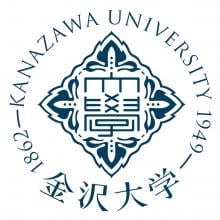
14 Mar 2023
In a study recently published in the journal ACS Nano, published by American Chemical Society, researchers from Kanazawa University, Kanazawa, Japan, collaborating with University of Washington, Seattle, USA, used frequency modulated atomic force microscopy to reveal the molecular architecture of a genetically designed peptide and its self-organization that forms single-molecule thick crystals on atomically flat graphite surfaces, that offer a potential platform for hybrid technologies such as bioelectronics, biosensors, and protein arrays.
08 Mar 2023
Modifying the active layer architecture at the heart of organic solar cells brings a big leap forward in efficiency.
03 Mar 2023
Bacteria living on soil and chicken manure could provide low-tech and sustainable green electricity.
03 Mar 2023
Researchers are working to overcome challenges in order to bring wearable, electric, wound-healing devices to clinical practice.
Events
Sorry, nothing coming up for this discipline
Researchers
Kyohei Okubo is an assistant professor at the Faculty of Industrial Science and Technology, Department of Materials Science and Technology, Tokyo University of Science.
Biomaterials Scientist working on surface engineering of medical implants used for the replacement of hip knee, cardiac and dental .
Assoc Prof Yang and her research team from SUTD conducts research into water desalination as well as energy storage simultaneously. She developed a low dimensional nanomaterial to desalinate ocean water using a process of hybrid capacitive deionization. This process, allows for the processing of desalinated water more efficiently while also providing low-cost energy storage.
For 20 years, I have been engaged in research in the development of compositions and study of the properties of heterocomposite polymer materials used in mechanical engineering. Currently, a performer in the applied joint Uzbek-Indian project “Improving the mechanical and tribological properties of polymer composite”.
Dr Teng Yin Ting is a Lecturer in Republic Polytechnic, Singapore, with more than 10 years of research experience in chemical additives, nanomaterials, battery materials and energy harvesting materials.
As Industry 4.0 is developing, sustainability and durability have to be established. I lead a multidisciplinary team of researchers that explore natural materials, bioinspired concepts, microstructural engineering and 3D printing to develop multifunctional durable structures. These materials can be 3D printed, are generally light weight, hard, and comprise various functionalities like stimuli responsiveness or resistance to extreme environments.
Dr. Sravya Tekumalla is currently a Principal Investigator in Nanyang Technological University, Singapore, where she works as a Presidential Postdoctoral Fellow. In addition, she also leads a small team of staff and students working in the domain of metal additive manufacturing (commonly known as 3D printing).
I am a leading expert in the reconstruction of an artificial cell membrane as a novel system for screening side effects of drugs on the heart. This system can assess the potential risks of drugs that unintentionally interfere with the function of membrane proteins in the heart muscle.
Dr.Ms.Aruna Dhathathreyan is a professor and emeritus scientist at the Advanced Materials Lab, CSIR-Central Leather Research Institute, India.
Ordered Functional Materials, like, COFs, COPs, CTFs for membrane applications (soft actuators and energy storage & conversion)
Madoka Ono is an associate professor at the Research Institute for Electronic Science/Green Nanotechnology Research Center at Hokkaido University and is the principal researcher at AGC Inc. Materials Integration Laboratories.
Michael Angelo B. Promentilla is a Professor of Chemical Engineering and the head of the Waste and Resource Management Unit of the Center for Engineering and Sustainable Development Research (CESDR) at De La Salle University (DLSU).
Associate Professor of Institute for Integrated Cell-Material Sciences (iCeMS), Institute for Advanced Study, Kyoto University.
Dr. Zhifeng Huang is a professor at Hong Kong Baptist University, and associate director of nanomaterials at HKBU's Golden Meditech Centre for NeuroRegeneration Sciences. He co-founded Mat-A-Cell Ltd.
Materials scientist studying structure and microstructure of metal and alloys by transmission electron microscopy. Specialize in light metals and quasicrystals.
Current: Deputy and Administrative Director & Principal Investigator of International Center for Materials Nanoarchitectonics (WPI-MANA) .
Professor at the Graduate School of Pure and Applied Sciences, University of Tsukuba
Dr. Omachi is Associate Professor, Research Center for Materials Science, Nagoya University
Prof. Kyoung- Jin Choi leads the Energy Conversion Materials Lab at Ulsan National Institute of Science and Technology (UNIST). He is also the editor of Electronic Materials Letters.
Prof. Oh is the director of the Creative Research Initiative Center for Functionally Antagonistic Nano-Engineering, and the director of the Active Materials and Dynamic Systems Lab at KAIST.
Giants in history
Sorry, nothing coming up for this discipline



